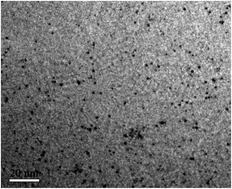Highly sensitive glucose biosensor preliminary applied for detecting the glucose levels of cerebrospinal fluid in patients with traumatic brain injury
Abstract
Traumatic brain injury (TBI) has been associated with an acute stress response mediated by the sympathoadrenomedullary axis, which can be assessed by measuring glucose levels. Thus, aiming for a more convenient assay system of glucose, a novel electrochemical measurement for the sensitive detection of glucose in cerebrospinal fluid (CSF) was developed in this work in virtue of the electrodeposition of platinum nanoclusters on stable composite films constructed from carbon nanotubes (CNTs) and a core–shell organosilica@chitosan nanospheres (OrgSi@CS) modified glassy carbon electrode. The morphologies and the structures of the OrgSi@CS–CNTs composite material and platinum nanoclusters were characterized by atomic force microscopy (AFM), transmission electron microscopy (TEM) and X-ray photoelectron spectroscopy (XPS). Cyclic voltammetries (CVs) were used to investigate the direct electrochemistry behavior between the electroactive center of glucose oxidase (GOD) and the electrode. The linear response range was determined from 1.2 × 10−6 to 1.6 × 10−3 M with a detection limit of 4.0 × 10−7 M, and the Michaelis–Menten constant (KappM) value was estimated to be 0.41 mM, indicating a high-catalytic activity for glucose. In vitro experiments were performed with clinical samples of CSF obtained from TBI patients and compared with the glucose oxidase endpoint method, which showed an acceptable measurement with enhanced speed and convenience, indicating the feasibility of the sensors for a real-time continuous monitoring in vivo.


 Please wait while we load your content...
Please wait while we load your content...